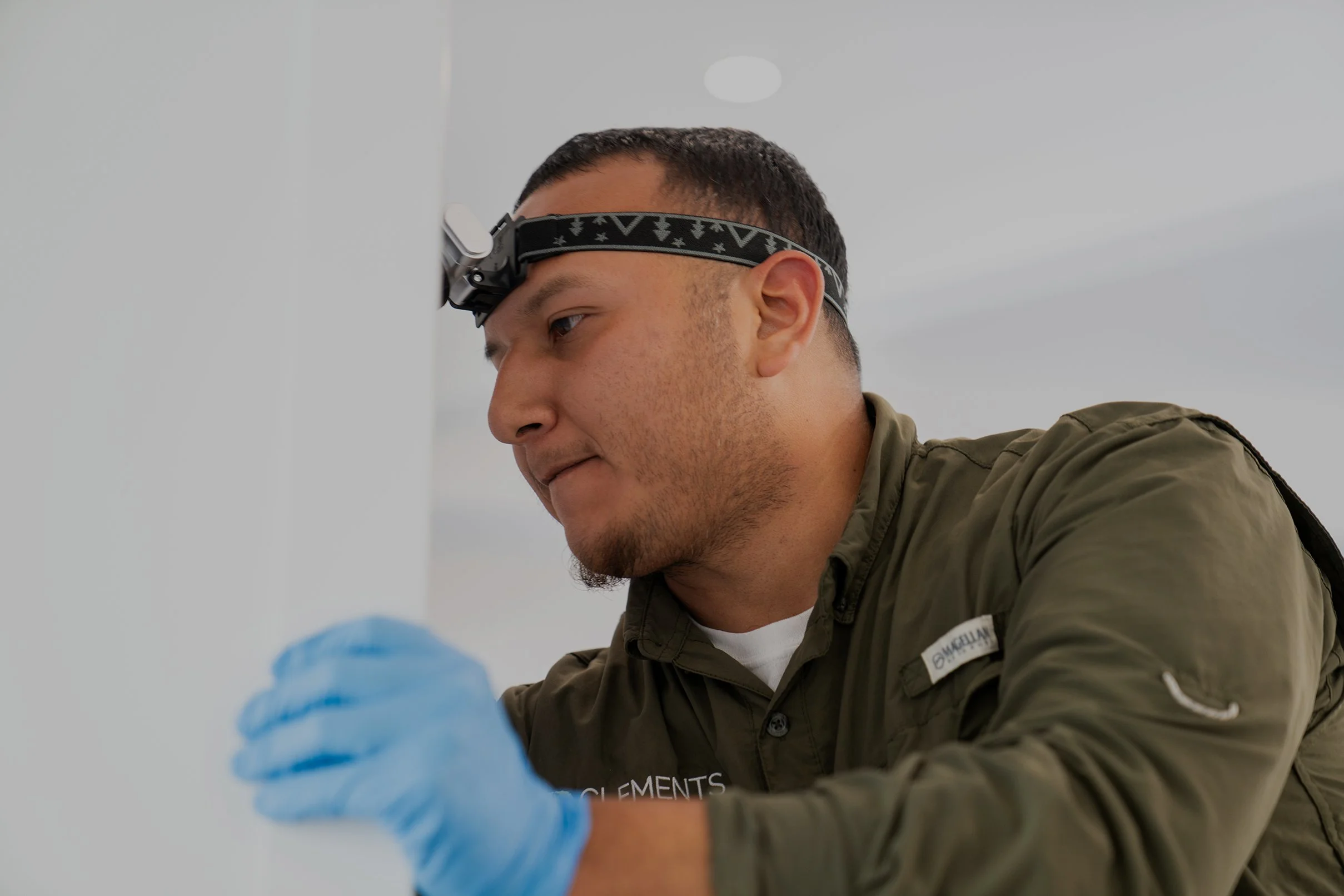Rodent Control Done Right
At Clements Pest Control, we take rodents seriously, and we take a science-backed approach to eliminating them. Our trained professionals don’t just set traps; we assess your entire property, identify points of entry, and apply proven exclusion methods to keep rodents out for good. From targeted trapping to long-term prevention strategies, we tailor each plan to your home’s specific needs. Serving homeowners and businesses throughout Vero Beach, Orlando, Naples, Stuart, and nearby Florida communities, we deliver reliable, local expertise you can trust. With us, it’s not just pest control, it’s peace of mind.
How RodentShield+ Works
Step 1: Entry Point Inspection
Our trained technicians will thoroughly inspect your property, carefully identifying rodent entry points, nesting areas, and signs of activity. Using their expertise, they’ll pinpoint the vulnerabilities that are allowing rodents inside. Once the inspection is complete, we’ll provide you with a clear, straightforward strategy to eliminate the problem and prevent future infestations.
Step 2: Entry Exclusion
We’ll provide you with a free inspection of your home, identifying for potential entry points and indicators of rodent activity. Once we identify the entry points where rodents enter your home, we’ll professionally seal the areas. This constricts the flow of rodents migrating in and out. The rodents left inside the home will be directed to mechanical traps baited with food sources.
Step 3: Trapping & Removal
We utilize mechanical rodent traps and place them out of reach from children and/or pets. The use of such traps means no inaccessible dead rodent bodies and no odor problems. Once installed, we’ll come back each day up to a week to monitor traps and remove dead rodents.
Step 4: Preventative Baiting
After the interior has been secured, your technician will install exterior stations every 50-100 ft (15.2-30.5 m) along the perimeter of your home and property boundary. These stations will be placed discreetly in shrubs or ground cover, and they will be locked to ensure bait remains inaccessible to children and/or pets.
When you meet with our team, we’ll greet you with a smile, address your needs and answers any questions. No pushy sales person or high pressure tactics. For many treatments, we can even start them at the time of your consultation.
Schedule your free inspection
Frequently Asked Questions (FAQ)
-
Common warning signs include scratching or movement noises in the attic, droppings in cabinets or garages, chewed wires, torn insulation, foul odors, or grease marks along baseboards. If you see even one sign, it’s best to schedule an inspection, rodents multiply quickly in Florida’s warm climate.
-
We use a multi-step approach that includes inspection, sealing entry points, targeted trapping, and long-term prevention. Instead of simply placing traps, our technicians identify how rodents got in and customize a plan to eliminate them and keep them out for good.
-
Yes. Exclusion is one of the most important parts of rodent control. We find and seal common entry points around the roofline, soffits, garage, and utility lines so rodents cannot re-enter your home. This reduces long-term problems and prevents recurring infestations.
-
Absolutely. Our products, traps, and bait stations are tamper-resistant and placed only in areas safe for your family. Your technician will walk you through everything and answer any safety questions you may have.
-
Here are a few tips that reduce rodent activity:
Seal gaps around the home
Keep shrubs and tree branches trimmed away from the roofline
Store food in airtight containers
Keep garages and storage areas tidy
Reduce outdoor clutter where rodents may nest
We can also provide ongoing exterior protection if needed.







